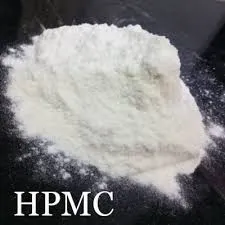
Dec . 11, 2024 03:32 Back to list
Applications and Benefits of Hydroxyethyl Cellulose in Various Industries
What is Hydroxyethyl Cellulose Used For?
Hydroxyethyl cellulose (HEC) is a non-ionic, water-soluble polymer derived from cellulose, which is a natural polysaccharide found in the cell walls of plants. This versatile compound plays an integral role in various industries due to its unique properties, including thickening, gelling, and film-forming capabilities. The applications of hydroxyethyl cellulose are extensive, spanning categories such as pharmaceuticals, cosmetics, food, and construction. In this article, we will explore the numerous uses of HEC and its benefits across these sectors.
Pharmaceutical Applications
One of the primary applications of hydroxyethyl cellulose is in the pharmaceutical industry. It serves as a drug formulation excipient, where it enhances the viscosity of solutions, suspensions, and semi-solids. Due to its water-retention properties, HEC helps in controlling the release of active pharmaceutical ingredients (APIs), ensuring a more consistent therapeutic effect. This controlled release feature is particularly beneficial for formulations such as tablets, capsules, and topical creams, where it can help mitigate the adverse effects of peak concentrations of drugs in the bloodstream.
Additionally, HEC is often used in hydrogels for wound dressings and controlled drug delivery systems. Its biocompatibility and non-toxicity make it an ideal candidate for medical applications, where it aids in maintaining a moist environment conducive to healing.
Cosmetic and Personal Care Products
The cosmetic industry extensively utilizes hydroxyethyl cellulose due to its thickening and stabilizing properties
. It is commonly found in products like shampoos, conditioners, lotions, and creams, where it helps improve the texture and consistency. By enhancing viscosity, HEC ensures that products spread evenly on the skin or hair and remain stable over time, preventing separation of ingredients.Moreover, it acts as a film-forming agent, providing a protective barrier on the skin that can help retain moisture. This property is especially valuable in moisturizing creams and sunscreens, where it aids in skin hydration and protection against environmental stressors. The ability of HEC to create clear films makes it appealing for formulations aiming for a lightweight feel without compromising efficacy.
what is hydroxyethyl cellulose used for

Food Industry Applications
In the food industry, hydroxyethyl cellulose serves as a food additive, classified under the E series as E461. It functions primarily as a thickener, stabilizer, and emulsifier in various food products such as sauces, dressings, and dairy products. By increasing the viscosity, HEC not only improves the texture of food items but also enhances their mouthfeel, creating a more enjoyable eating experience.
Another significant application of HEC in food production is its role in gluten-free formulations. When combined with gluten-free flours, hydroxyethyl cellulose can mimic the binding properties of gluten, improving the structure and elasticity of baked goods. This application is particularly important as the demand for gluten-free products continues to rise, catering to individuals with celiac disease or gluten intolerance.
Construction Industry Applications
The construction industry also benefits from hydroxyethyl cellulose, where it is used as a thickening agent in various materials such as paints, adhesives, and mortars. Its ability to improve the flow and workability of these products allows for easier application and manipulation during construction projects.
In cement-based materials, HEC can enhance the water retention capacity, reducing the likelihood of cracking and improving the overall durability of structures. This property is particularly important in high-performance applications, where the integrity of the materials directly influences the longevity and safety of buildings and other structures.
Conclusion
Hydroxyethyl cellulose is a multifunctional compound with a wide range of applications across various industries. Its thickening, stabilizing, and film-forming properties make it a valuable ingredient in pharmaceuticals, cosmetics, food products, and construction materials. As research continues to explore new potentials for hydroxyethyl cellulose, its role in enhancing product performance, safety, and user experience can only be expected to grow. In an era where innovation and sustainability are paramount, HEC stands out as an exemplary material that can contribute to both efficacy and eco-friendliness across various sectors.
-
Versatile Hpmc Uses in Different Industries
NewsJun.19,2025
-
Redispersible Powder's Role in Enhancing Durability of Construction Products
NewsJun.19,2025
-
Hydroxyethyl Cellulose Applications Driving Green Industrial Processes
NewsJun.19,2025
-
Exploring Different Redispersible Polymer Powder
NewsJun.19,2025
-
Choosing the Right Mortar Bonding Agent
NewsJun.19,2025
-
Applications and Significance of China Hpmc in Modern Industries
NewsJun.19,2025







